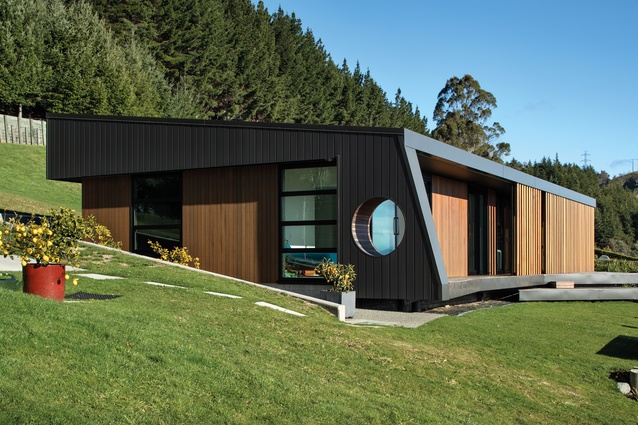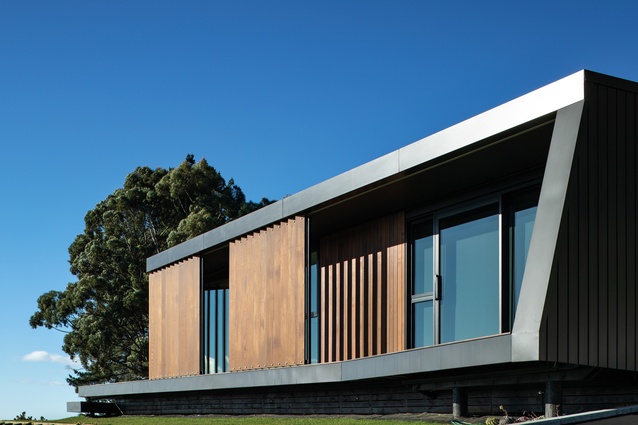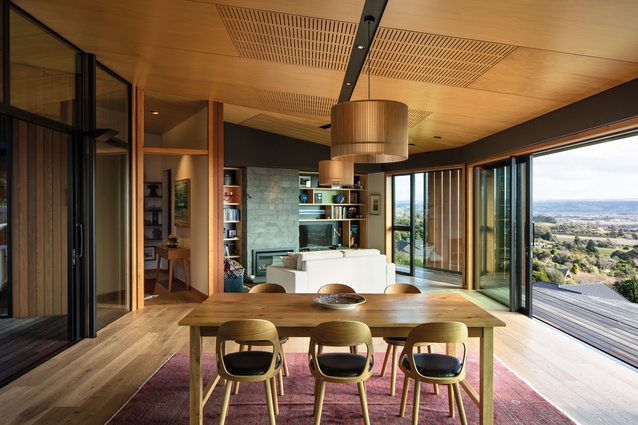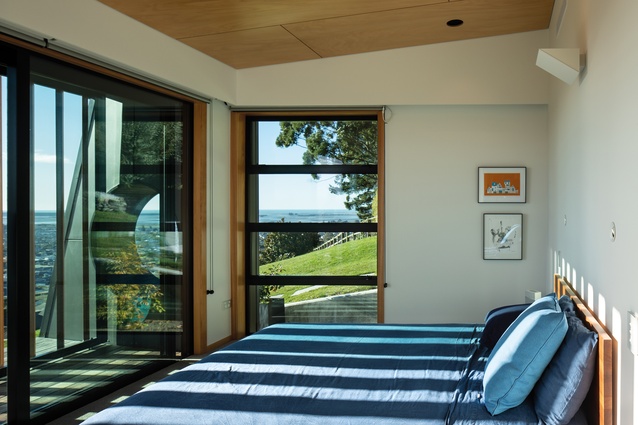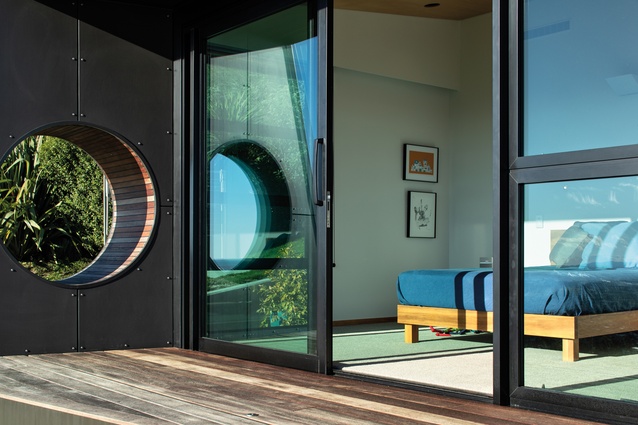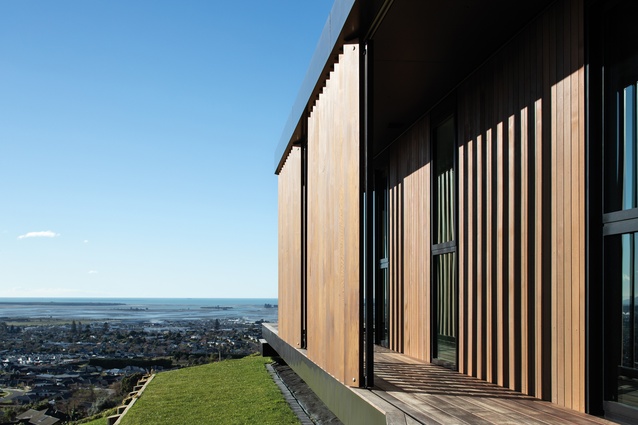‘A piece of sculpture’: Tasman View House
A Japanese engawa – or porch – captures the panoramic view of Tasman Bay into this home’s sculptural, nautical form.
The owners of this house are used to wide-spanning sea views; in a past life, they spent a lot of time sailing a yacht around the world. While not on the water, this house enjoys extensive views across Richmond township to the sparkling Tasman Bay beyond and has some features that remind the owners of their nautical life.
Designed by Brendon Monk of Modo Architects, the house, which is constructed on piles, appears to float on the sloped site. “I wanted it so you could see the whole shape from outside,” says Monk. “It’s a relatively simple form but it has a strong sculptural shape like a boat. And there are some vague references to the yachting life, too, like portal-shaped windows in the sides of the deck.”
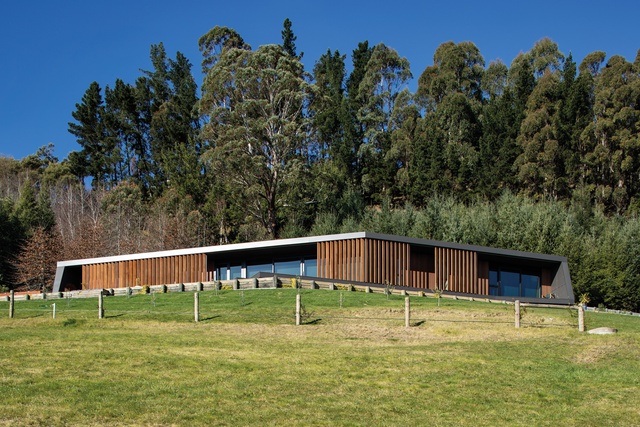
Perhaps stronger than the nautical references are the allusions to Japanese design. Monk lived in Japan for five years and was influenced by the special features of Japanese architecture, like the use of screens and the concept of the engawa. “This means an in-between space, a transitional space between inside and outside,” Monk explains. “The entry itself is called a genkan and is treated like an outdoor area, another transitional space with a step up to the living areas.”
For the Tasman View House, Monk created an engawa using timber screening that wraps around the house, enclosing a wrap-around deck. This prevents the house from overheating in the summer months, and can be opened up to let in light and views when desired. It also creates some beautiful shadow effects when the sun streams through the screens.
A genkan is created by continuing the pathway into the main entry using polished concrete with a pebble-stone aggregate. A step up and a change in flooring to wide oak boards signals the true living space. Vents, slats and sliding doors with composite paper-like screens also lend a Japanese taste to the house, along with the extensive use of pale timber.
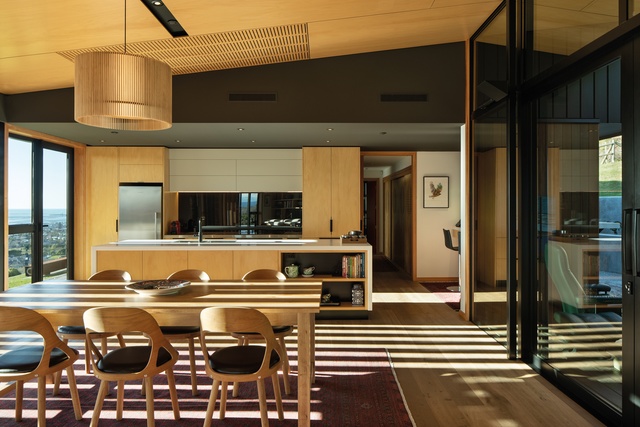
Fijian kauri and cedar shiplap feature inside and on the external cladding, where they are combined with aluminium Flashclad cladding. The roofline appears to fold down across the front edge of the house and delineate the deck and this gives a sculptural feel to the house.
A sunken courtyard tucks into the rear of the house as a place to shelter from the winds that sometimes come across the water. The house also has some environmental credentials, with rainwater tanks submerged below the ground in the front of the house and all wastewater treated on site. Windows are thermally broken and the roof has extra insulation above and beyond the Building Code requirements.
Monk delivered on the homeowners’ wishes for something that is “sleek and low-bling”. He compares the simplicity and functionality of the design to a Philippe Starck lemon squeezer: “The juicer is a simple thing that works perfectly and is like a piece of sculpture. It is the ultimate combination of design and functionality. I think it is better when you can make something like that without spending a lot of money and getting into layers of complexity: something that looks good, works well and isn’t overly complicated.”
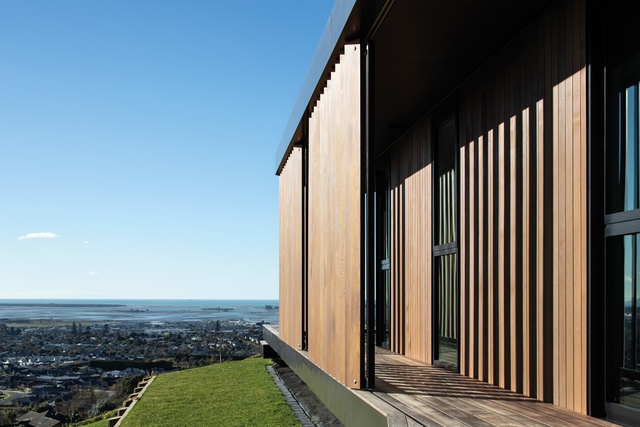
Material Selector
Brendon Monk discusses the materials chosen for the Tasman View House.

What is the structure?
The house, including the floor structure, is timber framed. Japan is a lot more earthquake prone than even New Zealand is but it also has both the largest and the oldest timber buildings in the world. When it comes to a balance of renewable resources, flexible structure, etc., simple pine framing is hard to beat. Concrete floors certainly have their place but I’ve come to like timber floors on timber piles more and more.
What materials did you choose for the cladding and how did you make this decision?
I’ve always liked simple metal cladding because it is low maintenance, cost effective and readily available in New Zealand. This house was originally going to have profiled metal cladding with some cedar but the clients really liked the slightly more ‘refined’ look and added strength of the Flashclad cladding, so the decision was made to change from profiled metal to the more expensive Flashclad.
It is a good robust product but, like all aluminium products, I guess there is a high level of embodied energy in the production of it and this has to be considered. It’s a constant battle trying to balance the selection of materials with sustainability issues.
This article first appeared in Houses magazine.


